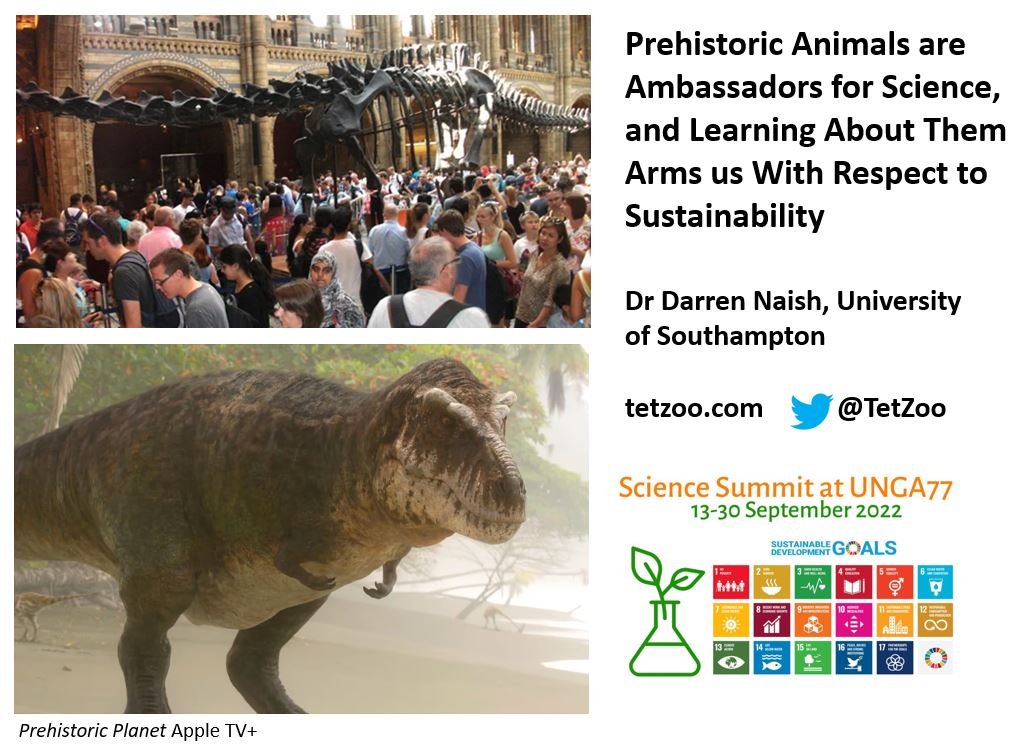A look back at August’s DinoCon 2025, our outstandingly successful first event!
Tetrapod Zoology ver 4’s 7th Birthday
Suburban Camera Trapping, Week 1
Announcing DinoCon … Tickets Now on Sale!
Tet Zoo Reviews Zoos: Tama Zoological Park, Tokyo
It Was the 19th Year in the History of Tetrapod Zoology
In Memory of Richard Ellis, Influential Artist and Author
Tetrapod Zoology Reaches 18 Years of Age
Once again, it’s late January, meaning that Tetrapod Zoology the blog – initiated one dark night in the long-ago age of 2006 – has reached another birthday. It’s 18th, no less. And thus it’s once more time to look back at the previous year from the very biased, wholly whimsical and personal perspective of Tet Zoo- themed events…
New Species Round-up for 2023, Part 2
In the previous article we looked briefly at those new amphibian and mammal species named during 2023. This time we skip ahead to reptiles… including birds because – yes – birds are reptiles in the phylogenetic sense)….
New Species Round-up for 2023, Part 1
This is a time of ecological crisis and massive loss of animal diversity, make no mistake about it. But there’s still a vast amount of new stuff left to discover, and every year we see a significant influx of newly recognized species, even among tetrapods. In this and the next article, we take a whistle-stop tour of those tetrapod species new to science as of 2023. As ever, remember that new to science is not synonymous with new to humanity…
Announcing the 10th Tetrapod Zoology Convention
On December 1st, 2nd and 3rd, the 10th Tetrapod Zoology Convention – TetZooCon – happens at Bush House, King’s College, The Strand, London. With just over a month to go (yikes), now is time to buy a ticket and consider joining us. It’s going to be the biggest TetZooCon so far, and hopefully the best. Here’s a rundown of what’s due to happen…
Five Years of Tetrapod Zoology ver 4
The 17th Year of Tetrapod Zoology: 2022 in Review
The Tet Zoo Guide to the Creatures of Avatar, Updated for 2022
Tetrapod Zoology at the United Nations Science Summit 2022
Today (September 27th 2022), I’m speaking at the United Nations Science Summit panel Knowing and Protecting Life on Earth Starts with Natural History and Science Innovation…
I don’t have time today to talk about the presentation itself (that will come later), but I make several points: on education and outreach, on accessibility of knowledge, on the importance of a historical approach to natural history, and on the universal appeal of amazing animals to all people of all backgrounds. I’m one of a team of people on this panel; the others are highly respected experts on biodiversity, conservation and nature writing: namely Dr Ursula Valdez (tropical avian ecologist and trans-cultural educator), Dr Tom Fleischner (author and director emeritus of The Natural History Institute), Dr Dita Cahyani (marine biodiversity scientist and innovator), and Dr Nalini Nadkarni (forest canopy pioneer and conservationist). The panel was arranged by Dr Seabird McKeon and Dr Michele Weber, and will be led and convened by Dr McKeon.






